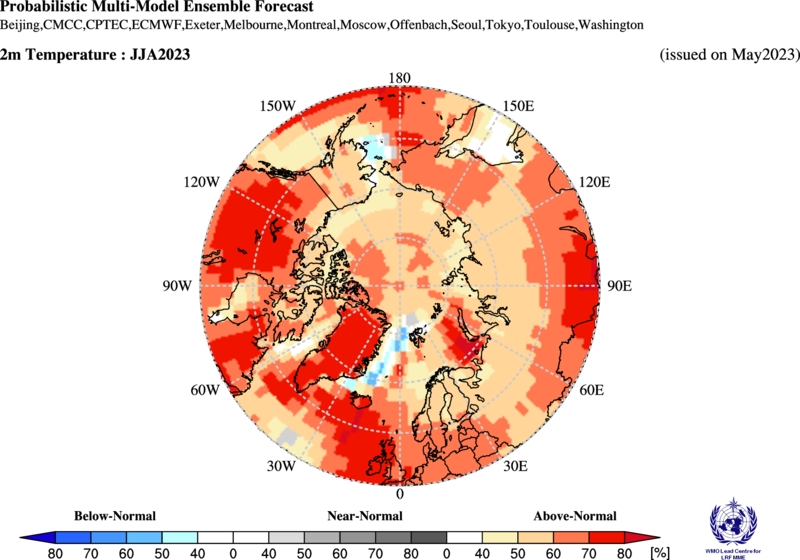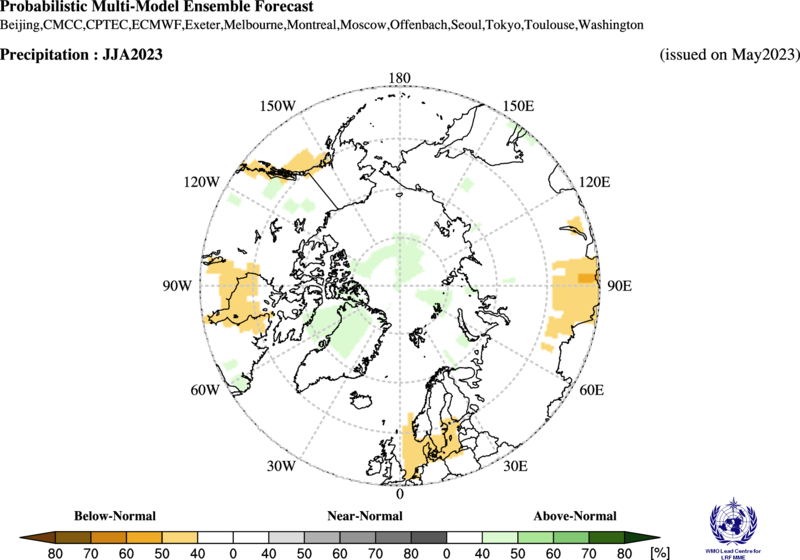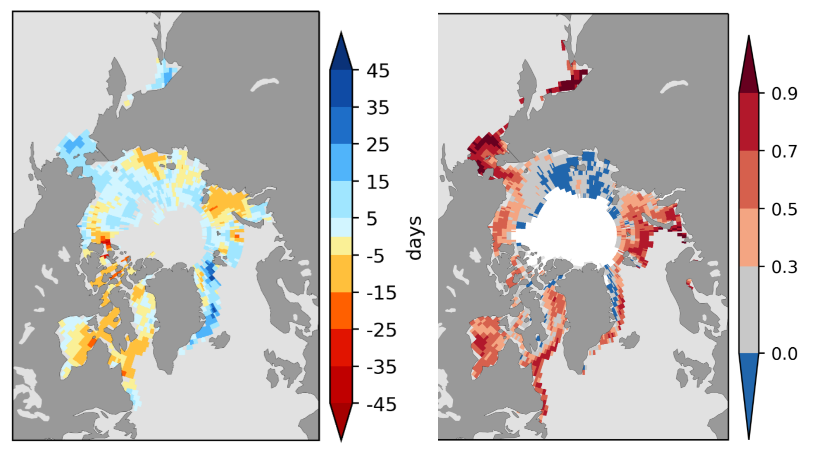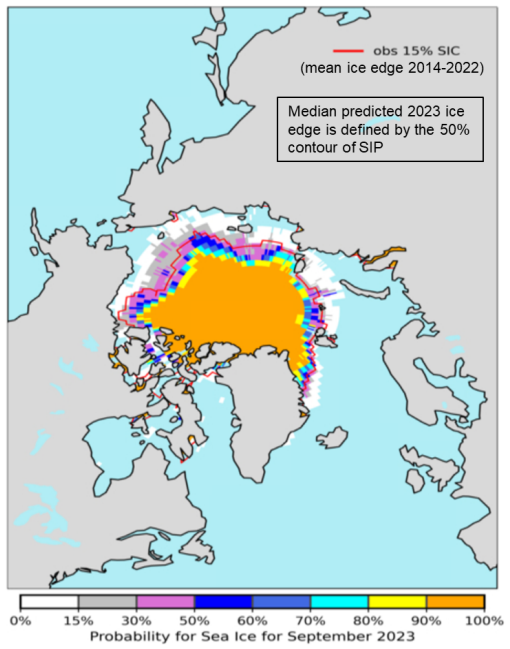The images below show seasonal outlooks for June to August 2023, for temperature, precipitation and sea ice. More details can be found in the Temperature, Precipitation, SST and SWE Validation and Seasonal Outlooks and the Sea-Ice Validation and Seasonal Outlooks presentations.
Temperature June, July and August 2023 Outlook
For the June-July-August 2023 (JJA 23) period, there is a probability of 40% or more that temperatures will be above normal in all regions across the Arctic. The highest probabilities for an above normal summer (60-70% or more) are in the eastern Canadian Arctic, western Nordic region and over eastern parts of Alaska and western Canada. However, 60-70% of the models agree on lower than normal temperatures in the Greenland Sea which differs from the rest of the Western Nordic region and from previous years. For the eastern Nordic region, the MME forecast is for above normal probabilities of 50% or higher, in the central and northern parts of the region, while these probabilities are somewhat higher (60% or more) in the south. Both Siberian regions (eastern and western) are expected to have above normal summer with 50% probabilities in the north and 60% or higher in the southern parts of the region. The Chukchi and Bering region has a probability of at least 50% for an above normal summer in the northern coastal parts while these probabilities exceed 60% above normal in other parts of this region.

Precipitation June, July and August 2023 Outlook
Over the largest part of the Arctic region, MME forecast is predicting equal probability chances for precipitation the summer of 2023 (white color on the figure below). There are some scattered regions over Alaska & Western Canada, Eastern Siberia and Chukchi and Bering regions where above normal precipitation is forecasted with at least 40% probability. Below normal precipitation is expected over Eastern Canada (Hudson Bay region) and over maritime areas of the eastern Nordic region, with at least 40% probability.

Outlook for sea ice spring break-up and September sea ice extent 2023
Sea ice break-up is defined as the first day in a 10-day interval where ice concentration falls below 50% in a region. The outlook for spring 2023 break-up, shown in the figure to the left below, displays the sea ice break-up anomaly compared to 2014-2022 average, while correlation detrended historical skill 1993-2022 anomaly is on the right. A near normal break-up is forecast for Barents Sea, Baffin Bay, Hudson Bay, Beaufort Sea and Chukchi Sea. A late break-up is forecast in the Greenland Sea, while in the Labrador Sea, Central Arctic, East Siberian Sea, Laptev Sea and Kara Sea an early break-up is expected. In the Beering Sea the break-up has allready occured.

Minimum sea ice extent is achieved each year during the month of September in the northern hemisphere. The chance of average September 2023 sea ice concentration exceeding 15% based on the 2014-2022 average is shown in the figure below. The forecast for most of the Arctic is a below normal September ice extent. Near normal ice extent is forecast for the Barents and Greenland Seas.

